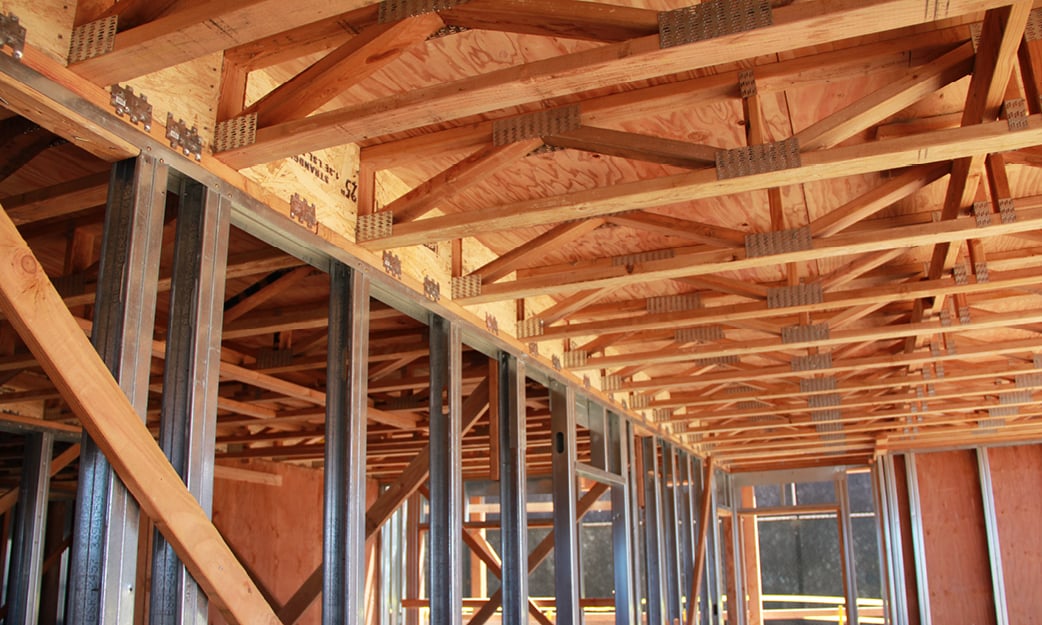What Are I-Joists?
I-Joists are structural components made from a combination of high-quality materials. Typically, they consist of two flanges (usually made from solid wood, LVL, or plywood) and a web (often made from oriented strand board or plywood), creating an "I" shape that gives them strength and stability. Their design makes them lighter than solid wood beams but allows them to bear significant loads, making them particularly useful in the construction of multi-story buildings.
Advantages of Using I-Joists in Multi-Story Buildings
Enhanced Strength-to-Weight Ratio
One of the standout features of I-Joists is their superior strength-to-weight ratio. Due to their engineered construction, they can support significant loads while remaining lightweight. This is particularly beneficial in multi-story buildings where weight is a critical factor in the overall structural integrity. Lighter materials can reduce the overall dead load of the building, improving its overall performance and reducing the need for extensive foundation work.
Consistency and Precision
Unlike traditional timber, I-Joists are manufactured in controlled environments, ensuring a high degree of consistency. Every I-Joist is made to specific dimensions, which helps eliminate the variability seen in natural wood, such as warping, cracking, or dimensional changes. This consistency ensures that the joists perform as expected, which is crucial in multi-story buildings where load distribution and structural integrity are paramount.
Increased Span Capabilities
I-Joists can span longer distances than traditional wood beams, reducing the need for intermediate supports or columns. This is particularly advantageous in multi-story construction, where open, unobstructed spaces are often desired for aesthetic or functional reasons. With I-Joists, large, open floor plans can be achieved without sacrificing structural strength.
Reduced Material Waste
Since I-Joists are manufactured to precise specifications, there is significantly less material waste during the construction process. Traditional wood beams often require additional cutting and adjustments on-site, leading to waste that adds both cost and environmental impact. In contrast, the production of I-Joists uses the raw materials more efficiently, making them a more sustainable option for building projects.
Sound and Vibration Control
In multi-story buildings, minimizing noise and vibration transmission between floors is essential for creating a comfortable living or working environment. I-Joists offer excellent sound-dampening properties due to their engineered design. The materials used in the construction of the joists help absorb and reduce vibrations, resulting in quieter floors. This is especially important in residential buildings or office spaces where noise control is a top priority.
Ease of Installation
The lightweight nature of I-Joists makes them easier to handle and install compared to traditional solid wood beams or steel joists. This reduces the time and labor required for installation, contributing to cost savings and a quicker construction timeline. Furthermore, I-Joists are often designed to integrate seamlessly with other structural elements, such as flooring systems and roof trusses, streamlining the overall construction process.
Long-Term Durability and Performance
The engineered materials used in I-Joists are designed to resist common issues that affect traditional timber, such as rot, mold, and pest infestations. This makes them a more durable choice for multi-story buildings, where the longevity of the structural components is a critical consideration. With proper maintenance, I-Joists can perform reliably for decades.
Considerations When Using I-Joists
While I-Joists offer numerous advantages, there are several factors to consider when incorporating them into the design of a multi-story building.
Design Flexibility
Although I-Joists are incredibly versatile, the initial design of the building must be carefully planned to ensure that the joists are used to their full potential. Proper load calculations, including the expected live load, dead load, and other forces acting on the structure, are essential for determining the correct size and placement of I-Joists. It is crucial to work with a structural engineer to ensure that the I-Joists meet the building’s performance requirements.
Handling and Storage
Due to the materials used in their construction, I-Joists can be susceptible to damage during transportation or storage if not handled properly. It is important to store the I-Joists in a dry environment and ensure that they are kept off the ground to prevent moisture absorption, which could lead to deterioration. Builders should also take care when moving the joists to avoid bending or breaking them.
Connection Details
The connections between I-Joists and other structural elements, such as beams, columns, and walls, must be carefully designed. Special connectors or fasteners are often required to ensure that the I-Joists are securely anchored. Failure to properly design and install these connections can compromise the structural integrity of the building. Collaboration between architects and engineers is essential to address these details.
Building Codes and Regulations
Depending on the location of the construction project, there may be specific building codes and regulations governing the use of engineered wood products like I-Joists. It is important to ensure that all design and installation practices comply with local standards to avoid delays or compliance issues during the construction process.
Incorporating I-Joists into the design of multi-story buildings offers numerous benefits, from enhanced strength and durability to reduced material waste and quicker installation times. These engineered wood products can help achieve the open spaces and structural efficiency that modern building designs demand. However, like any construction material, I-Joists require careful planning and consideration to ensure they perform as intended. By understanding both the advantages and considerations of using I-Joists, builders and designers can make informed decisions that contribute to the success of their multi-story building projects.
